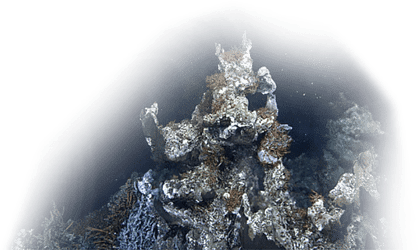Blog post by [Dr. Gail Anderson](http://www.sfu.ca/~ganderso/). Originally posted on Wiring the Abyss 2014 Expedition portal.
Friday September 19th, 2014 marks a milestone as it will be the 10th in a series of carcass deployments in the Salish Sea. Almost a decade ago, Dr. Verena Tunnicliffe saw me give a talk at the University of Victoria on forensic entomology and she invited me ‘on board’ VENUS to deploy a pig carcass as a human proxy under a camera at the bottom of the Saanich Inlet. I was the first external researcher in VENUS. **No-one had ever been able to conduct such research** – to observe in real time what happens to a body in the marine environment. That first deployment and the three subsequent ones were during an unfortunate time when a [number of human feet in running shoes were washing ashore](http://en.wikipedia.org/wiki/Salish_Sea_human_foot_discoveries). These sad cases became a media sensation around the world, leading the media and the public to make unfounded claims of murder and dismemberment. The early pig videos clearly showed the police and public alike that disarticulation of a foot is normal and common in decomposition in these waters (Fig. 1). These deaths were not foul play. My colleague [Dr. Lynne Bell](http://www.sfu.ca/~lynneb/), a forensic anthropologist, joined the team in 2012 and, funded by the Canadian Police Research Centre and Department of Defence, we began the most recent set of experiments.
Alerts
SHOWING 3 RESULTS
Showing matches for "Salish Sea"
CSI Salish Sea Completes with 10th Deployment
Overview
#ONCabyss Spring 2024 Expedition Recap
Overview
Explore highlights from the first #ONCabyss expedition of 2024, onboard the Canadian Coast Guard vessel, *John P. Tully* from March 9 to 17.
Working like a well-oiled machine, Ocean Networks Canada (ONC), Tidewater Canada, and the Canadian Coast Guard (CCGS) started mobilizing the *John P. Tully* on Saturday, March 9 for the seven-day #ONCabyss expedition to maintain ONC’s Victoria Experimental Network Under the Sea (VENUS) observatory sites.
ONC is supported by the Canada Foundation for Innovation, Government of Canada, University of Victoria and Government of British Columbia.
Using AI to detect orcas in the Salish Sea
Overview
A near real-time orca detector using sound and acoustic context awareness is being developed for the Salish Sea, with potential uses including the identification of these mammals for vessels in the area.
Fabio Frazao, [one of the first recipients of the $20,000 Roy Hyndman Ocean Observing Award](https://www.oceannetworks.ca/news-and-stories/stories/meet-the-first-recipients-of-the-roy-hyndman-award/), has completed his one-year project with Ocean Networks Canada (ONC). Using hydrophone data from ONC’s Victoria Experimental Network Under the Sea (VENUS) observatory, Frazao expanded upon his artificial intelligence (AI) algorithm to detect and classify orca sounds in the Salish Sea.
Orcas make a wide range of sounds like whistles, echolocation clicks, and low-frequency pops, which can be mistaken for other marine mammals and masked by ambient underwater noises.
The AI algorithm learned from thousands of these orca vocalizations and other sounds recorded from ONC’s hydrophone network deployed in the Salish Sea. The detector was then tested on 65 hours of acoustic data to detect and distinguish orca sounds.
Stay up to date with ONC
Subscribe

Ocean-Climate Building University of Victoria
#100, 2474 Arbutus Road, Victoria, BC, Canada, V8N 1V8
info@oceannetworks.ca+1 (250) 472-5400Marine Technology Centre University of Victoria
#106, 9865 West Saanich Road, North Saanich, BC, Canada, V8L 5Y8
info@oceannetworks.ca+1 (250) 472-5400@ 2025 Ocean Networks Canada. All rights reserved.